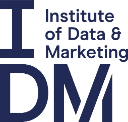In the first article on becoming a confident conference speaker I covered the benefits of conference speaking both to the direct and digital sector and to those working within it (if you missed it, read it here).
If you're wondering what to do first in order to get things moving, keep reading. This is my four-step guide to getting started as a conference speaker.
Step one: Find your idea
Every speaker needs an idea to share. The place to look to find yours is your experience, and in particular what you have noticed and learned. You may have met a challenge recently for example. Or created something new and effective. This is where you will find your unique idea.
Here are some things you can do to start to unpack your experience and bring your idea to life.
- Describe your experience as a story
- Set the scene
- What was your challenge?
- Why was it a challenge?
- What was interesting to you about it?
- What was your journey?
- What did you do first?
- What happened?
- What did you learn?
- When were you tested and how did you respond?
- What was the turning point?
- What can others take from your telling of this story?
Developing your thinking by answering these questions will start to turn your experience into the content that has a value for others.
Step two: Imagine your audience
Who would be interested in your idea? Who would be helped by what you've got to share? Who would it be useful to? Are they people like you? Or are they different?
Step three: Locate your audience
Where does your audience hang out? Who organises conferences for them? And who has their trust? Who emails you about conferences they're trying to get you to go to? A little-known truth is: the people who speak at conferences are often those that approach the organiser. In general, they are not plucked from the starry sky.
Step four: Make your approach
When you have your material, your audience and your conference targeted the next step is to make your approach. You'll need to have plenty of gentle persistence and resilience, and be prepared to be helpful and flexible.
Make your initial approach by email in 3 short 3 line paragraphs:
- Para one: Here's who I am, where I work, what I do.
- Para two: I have this to share. Here's why it could be useful to your audience.
- Para three: Is this of interest? What is the best way to discuss this?
You'll find your own language, but don't necessarily expect a response. Give it a week and re-forward the email. Give it another and if you've still not heard, call them. Be ready to be flexible. Accept what they offer you, whatever the slot and whatever the format. This is about getting your foot on the first step of the ladder.
When you have your idea, and before you approach a conference organiser discuss it with your boss. They should view the opportunity favourably for your development and the profile of the business, but there may be a policy on conference speaking so check this out too. When you've got approval and a speaker slot be prepared to start writing to promote the thinking you're going to share. This is a great way to warm up for writing your script.
With all of this done, you're nearly there. Next time, I'll talk about how to build your confidence as the conference approaches.
In the meantime, I'm happy to hear from you so feel free to connect with me on LinkedIn or Twitter.
To learn more about the arts of public speaking and other important business leadership skills, enrol onto the IDM's Innovate You: Become a Modern Marketing Leader.
Did you find this blog useful?
At the IDM we are passionate about educating marketers and providing resources to help advance your career.
If you are interested in enhancing your CV and upskilling, browse through our wider range of marketing courses and qualifications; from one-day short courses to post-graduate diplomas.
Our learning and development team will be happy to advise based on your needs and requirements.
